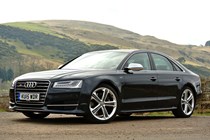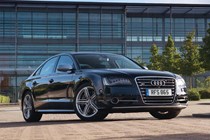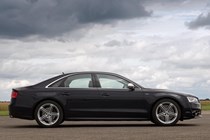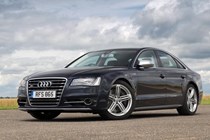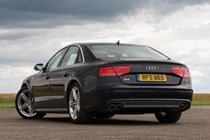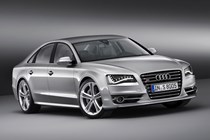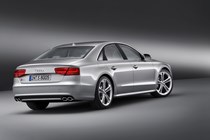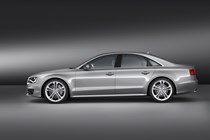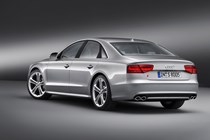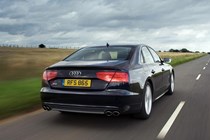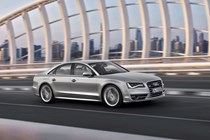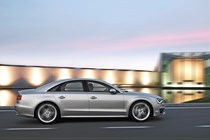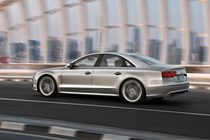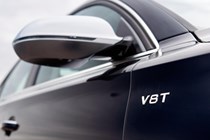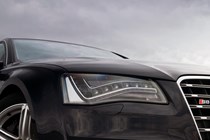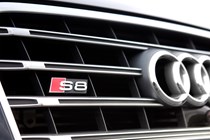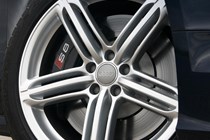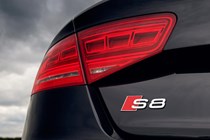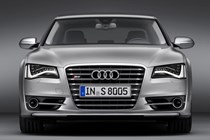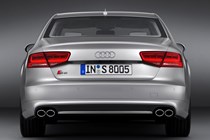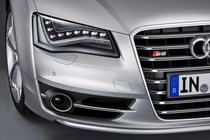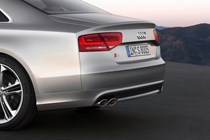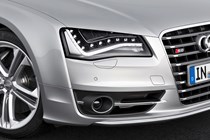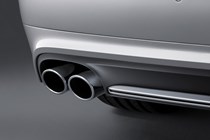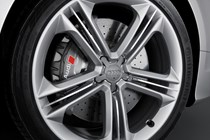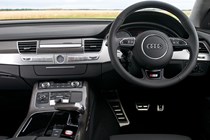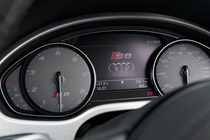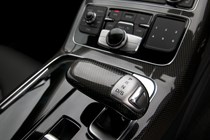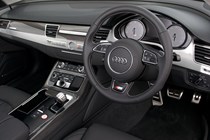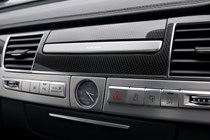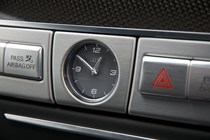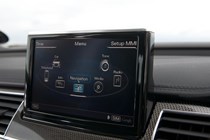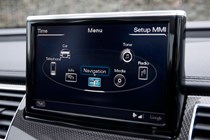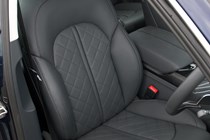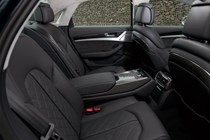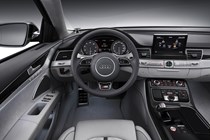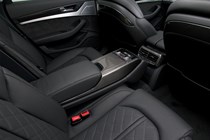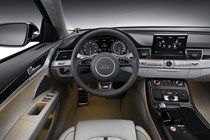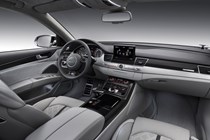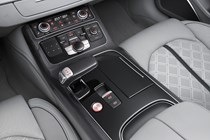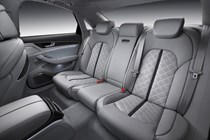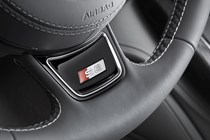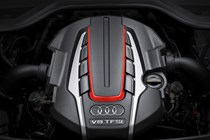Audi A8 S8 engines, drive and performance
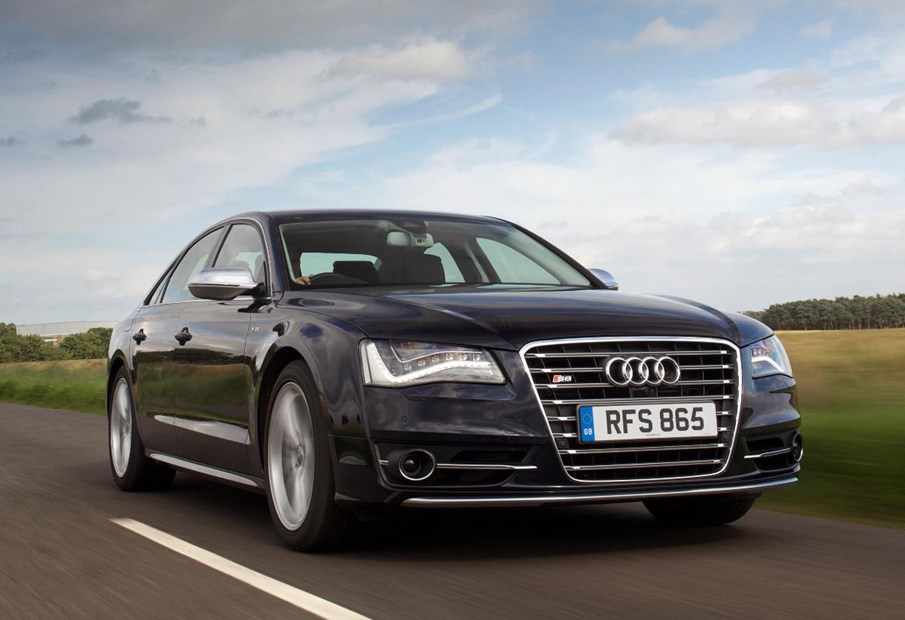
As you’d expect with a 513bhp twin-turbo V8 TFSI engine under the bonnet, Audi S8 performance is verging on the spectacular. With 650Nm of torque on offer, from as low down the rev range as 1,700rpm, and the firm’s famed quattro four wheel drive system it’s no surprise that it can out-accelerate many supercars.
The benchmark 0-62mph sprint takes only 4.1 seconds, though like all A8 models capable of more the S8 has an electronically limited top speed of 155mph. From behind the wheel those figures certainly seem achievable, and there appears to be no let-up in the delivery of its power, the S8 surging forward at an incredible rate at the merest hint of pressure on the accelerator pedal.
That’s not to say it can’t be driven slowly and smoothy – changing the Drive Select options into Comfort sees to that – and there’s no loss of refinement at any speed or rate of acceleration. In fact if there’s any criticism to be made it’s the loss of the V10 scream from the previous model, though the V8 doesn’t actually sound that bad in isolation.
Of course there’s no manual gearbox option for this car, the S8 coming with the eight-speed automatic gearbox found in the rest of the range. It does its job admirably, with smooth and quick changes in automatic mode and the option to control any cog-swapping via the steering wheel mounted gearshift paddles.
With standard quattro four wheel drive there’s no questioning just how long the Audi S8 will hold onto its line through a corner, and even in wet weather the grip from the wheels is astonishing – especially when you consider how heavy this car is.
It’s helped by the standard Sports adaptive air suspension which is stiffer than the normal car’s set up and a 10mm lower ride height. The steering is more direct too, tough still not as communicative as we’d like and there’s increased options on the Drive Select system.
Up to 100 percent of the engine’s power can be sent to the rear axle, though in normal driving the power is split 40/60 front to rear. A self locking differential in the centre is augmented by a standard sports differential at the rear, which allows the torque to be varied between the rear wheels to increase stability when cornering.
But at 2,065Kg (the Jaguar XJR is somewhat 200Kg lighter) there’s no escaping that weight, and regardless of what you do with the car’s systems it always feels slightly more blunt instrument than scalpel sharp. Don’t doubt it’s ability – there’s few cars as capable of carrying such high speed over great distances so effectively – but also don’t expect the last word in precision or feedback from the S8’s chassis.
Considering it weighs so much and can accelerate so quickly, it’s important to be able to wipe off that speed effectively in an emergency situation – which is where the optional ceramic brakes come into play. The disc size has increased to a massive 400X38mm and along with 6-piston calipers they stop the S8 with maximum effort time and time again. For those concerned with cost they are expected to last up to 183,000 miles without the need for replacement.


